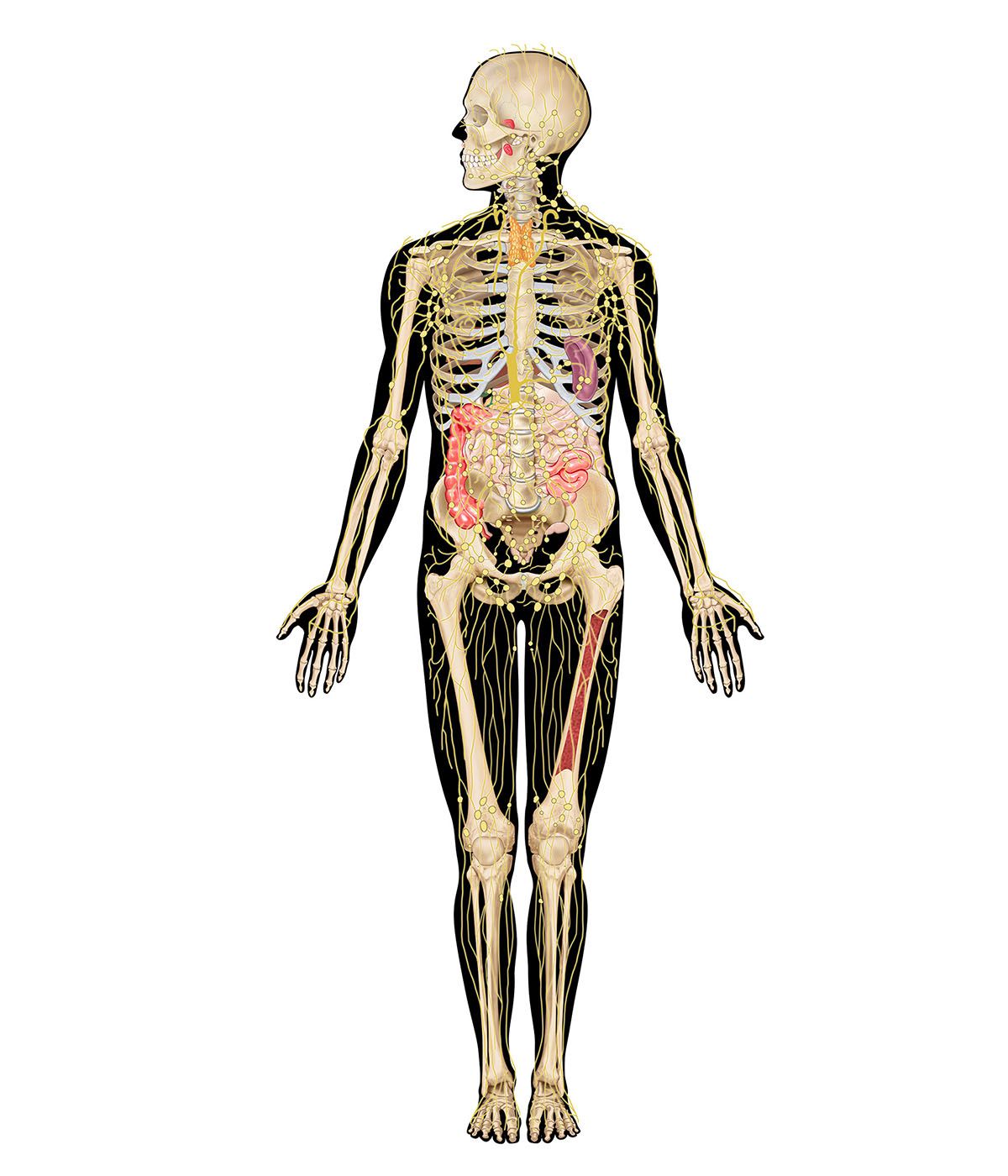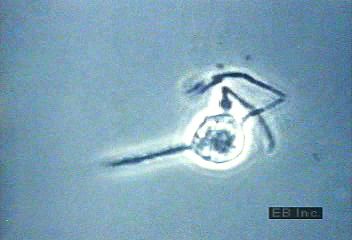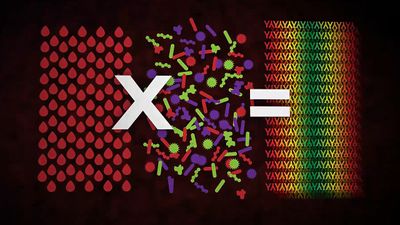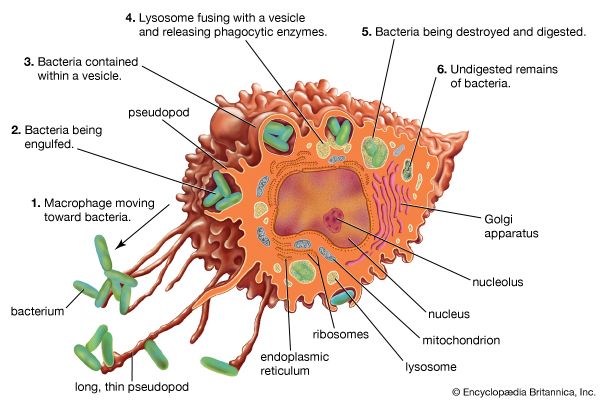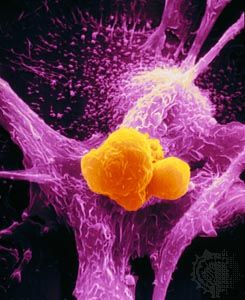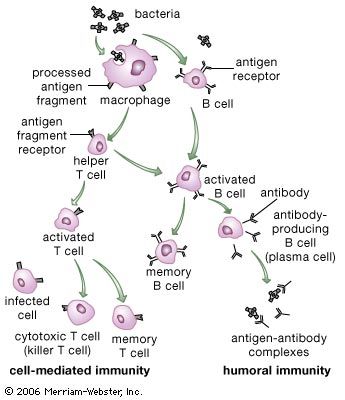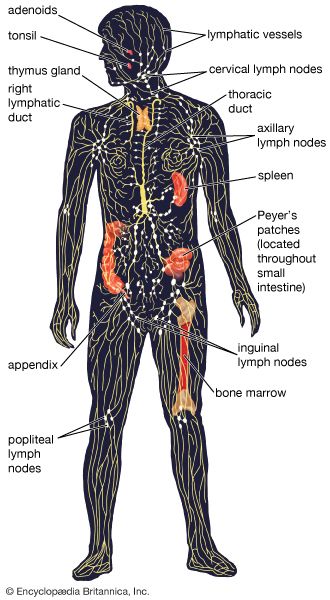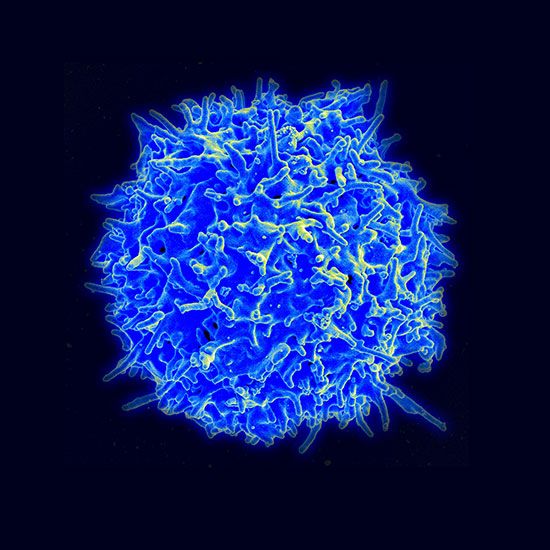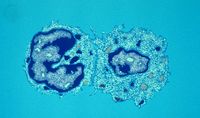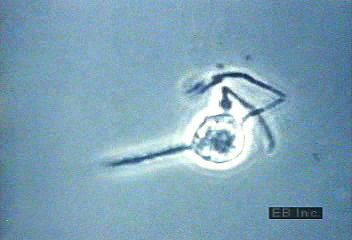Interferons
Another group of proteins that provide protection are the interferons, which inhibit the replication of many—but not all—viruses. Cells that have been infected with a virus produce interferon, which sends a signal to other cells of the body to resist viral growth. When first discovered in 1957, interferon was thought to be a single substance, but since then several types have been discovered, each produced by a different type of cell. Alpha interferon is produced by white blood cells other than lymphocytes, beta interferon by fibroblasts, and gamma interferon by natural killer cells and cytotoxic T lymphocytes (killer T cells). All interferons inhibit viral replication by interfering with the transcription of viral nucleic acid. Interferons exert additional inhibitory effects by regulating the extent to which lymphocytes and other cells express certain important molecules on their surface membranes.
Proteins from naturally occurring bacteria
In the small and large intestines the growth of invading bacteria can be inhibited by naturally gut-dwelling bacteria that do not cause disease. These gut-dwelling microorganisms secrete a variety of proteins that enhance their own survival by inhibiting the growth of the invading bacterial species.
Cellular defenses
If an infectious agent is not successfully repelled by the chemical and physical barriers described above, it will encounter cells whose function is to eliminate foreign substances that enter the body. These cells are the nonspecific effector cells of the innate immune response. They include scavenger cells—i.e., various cells that attack infectious agents directly—and natural killer cells, which attack cells of the body that harbour infectious organisms. Some of these cells destroy infectious agents by engulfing and destroying them through the process of phagocytosis, while other cells resort to alternative means. As is true of other components of innate immunity, these cells interact with components of acquired immunity to fight infection.
Scavenger cells
All higher animals and many lower ones have scavenger cells—primarily leukocytes (white blood cells)—that destroy infectious agents. Most vertebrates, including all birds and mammals, possess two main kinds of scavenger cells. Their importance was first recognized in 1884 by Russian biologist Élie Metchnikoff, who named them microphages and macrophages, after Greek words meaning “little eaters” and “big eaters.”
Granulocytes
Microphages are now called either granulocytes, because of the numerous chemical-containing granules found in their cytoplasm, or polymorphonuclear leukocytes, because of the oddly shaped nucleus these cells contain. Some granules contain digestive enzymes capable of breaking down proteins, while others contain bacteriocidal (bacteria-killing) proteins. There are three classes of granulocytes—neutrophils, eosinophils, and basophils—which are distinguished according to the shape of the nucleus and the way in which the granules in the cytoplasm are stained by dye. The differences in staining characteristics reflect differences in the chemical makeup of the granules. Neutrophils are the most common type of granulocyte, making up about 60 to 70 percent of all white blood cells. These granulocytes ingest and destroy microorganisms, especially bacteria. Less common are the eosinophils, which are particularly effective at damaging the cells that make up the cuticle (body wall) of larger parasites. Fewer still are the basophils, which release heparin (a substance that inhibits blood coagulation), histamine, and other substances that play a role in some allergic reactions (see immune system disorder: Allergies). Very similar in structure and function to basophils are the tissue cells called mast cells, which also contribute to immune responses.
Granulocytes, which have a life span of only a few days, are continuously produced from stem (i.e., precursor) cells in the bone marrow. They enter the bloodstream and circulate for a few hours, after which they leave the circulation and die. Granulocytes are mobile and are attracted to foreign materials by chemical signals, some of which are produced by the invading microorganisms themselves, others by damaged tissues, and still others by the interaction between microbes and proteins in the blood plasma. Some microorganisms produce toxins that poison granulocytes and thus escape phagocytosis; other microbes are indigestible and are not killed when ingested. By themselves, then, granulocytes are of limited effectiveness and require reinforcement by the mechanisms of specific immunity.


